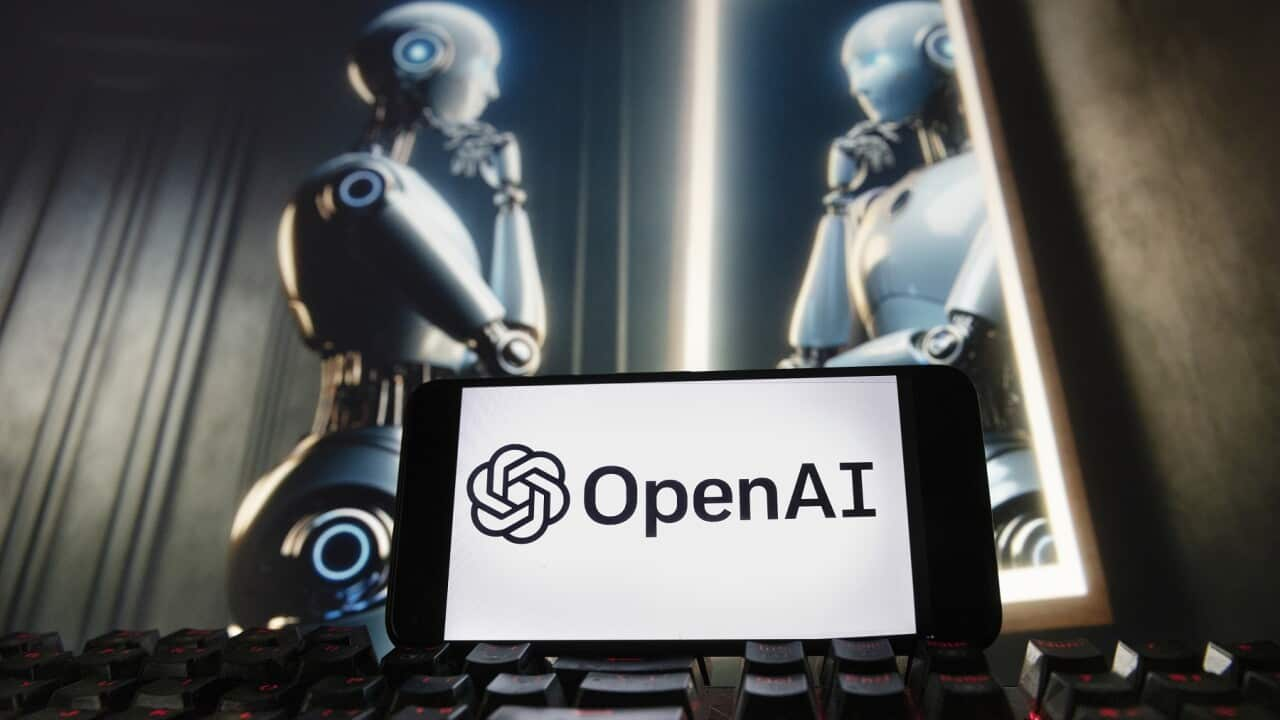TRANSCRIPT
More than 400 million weekly users making a total of one billion requests every single day - that's the estimated reach of ChatGPT.
And it's just one company.
There are thousands of AI chatbots fielding an increasing number of queries.
And while the technology may seem invisible to the average user, the environmental toll is significant, explains Dr Ascelin Gordon, a Senior Lecturer in Sustainability at Melbourne's RMIT University.
"When the big AI boom happened a few years ago, I became really interested in the environmental footprint that was resulting from our intense, growing AI usage. And so I began doing some research around looking at AI use and data centres and what the impacts were that resulted from those."
Dr Gordon explains that AI requires a lot of computer power both to train and deploy the technology.
"So AI basically runs in data centres. And when we have these AI models, they need to be first trained, which uses a lot of energy and resources. And so the training occurs running in these big data centres and then they need to be deployed where users can interact with them. The problem is you can have millions of users using an AI model every single day. And so the resources quickly add up. "
Data centres, which house computing infrastructure, have been around for decades.
Up until now, they've maintained a fairly stable appetite for power, but the AI boom is driving a surge in energy demands.
Research carried out by investment bank Goldman Sachs in 2024 suggests a single ChatGPT query uses nearly 10 times as much energy as a typical Google search.
Analysts at the time stated that AI could drive the kind of electricity growth which hasn’t been seen in a generation.
Earlier this year, U-S President Donald Trump issued executive orders to allow some coal-fired power plants set for retirement to keep running, in part, to meet the rising demand of data centres .
Dr Gordon says data centres across the globe are expanding both by numbers and in size, as the technology becomes even more sophisticated.
"There's probably around up to 7,000 data centres all around the world and the number is rapidly growing. Now people are starting to do things like generate images and generate audio and even generate video. And doing those sorts of activities can use hundreds and thousands of times more electricity and water compared to just doing simple text queries."
The International Energy Agency, or the I-E-A, estimates that a single data AI focused centre consumes as much electricity as 100,000 households.
And the largest ones under construction today will consume 20 times as much.
For context, however, these sprawling warehouses - located in almost every corner of the world - accounted for just 1.5 percent of global electricity consumption in 2024.
But the figure is expected to double by the end of the decade, according to the IEA research published in April.
Power-hungry, and water-thirsty too.
By some estimates, between 20 and 50 prompts to an AI chatbot can require up to half a litre of water.
Professor Seyedali Mirjalili founded the Centre for Artificial Intelligence Research and Optimisation at Adelaide's Torrens University.
He says while the exact toll is difficult to quantify, data centres use vast amounts of water for cooling purposes.
"It depends on obviously the model that you use. Some of them are quite small, some of them are quite large. The data centre is where the data is stored, it's racks of servers so it requires a large amount of electric electricity to run those servers. And also you need a lot of waters to cool it down and that's where the water consumption comes in."
And then, Dr Gordon says there's the issue of e-waste.
"As these data centres proliferate around the world, the amount of e-waste that the discarded computers that are used every time they're replaced is growing massively. So it's really important that we get on top of this e-waste problem."
There are growing calls for tech companies to be required to monitor the environmental costs of AI and for governments to implement sustainability standards.
Professor Mirjalili again.
"Other things that should be mandated and should be prioritised as well, like energy efficiency, water efficiency, or making sure that AI is aligned with human values. And I believe that this should be on the agenda for governments and large corporates."
There have been some improvements in efficiency, as well as investments in cleaner energy.
If done right, Professor Mirjalili says, AI has the potential to help drive down emissions.
"If you think about the emerging technology that have been able and will be able to help us to combat the challenges that global challenges, AI is definitely one of them. Forecasting, modelling of the emissions of different companies. So I would say those are good examples of where AI can help us to better understand and model climate change."
There's the potential to create a future where AI is tool in solving, rather than helping cause, the climate crisis.













